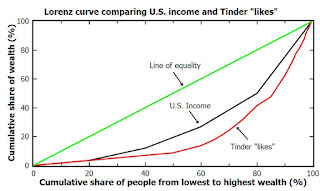Philip Tetlock has done some very good work documenting how prone experts are to mistaken forecasts. Indeed, individual experts tend to have a higher forecast failure rate than small teams of informed non-experts.
This article is examining a slightly different issue. Not forecasting ability but quality of the knowledge base of experts. All the standard caveats - small sample size, self-selected participants.
From Oh dear, even people with neuroscience training believe an awful lot of brain myths by Christian Jarrett.
Three years ago, the film Lucy came out starring Scarlett Johansson as the eponymous heroine who is implanted with drugs that allow her to use the full capacity of her brain rather than the mere 10 per cent that the rest of us supposedly use. In response I wrote an article for WIRED “All you need to know about the 10 per cent brain myth in 60 seconds“. Soon afterwards I received an angry, acerbic 1,200-word email from a reader: “I am obviously not going to insist you take your article down since that isn’t my place,” she wrote, “but you should certainly not feel proud to be spreading such misinformed information to the public”.OK, how did the experts perform compared to the general public. One would hope that they confirmed all 14 true statements and denied all 18 false statements. Ah. Experts.
What particularly shocked me was not just the tone of the correspondence, but the fact this email, endorsing the 10 per cent brain myth, came from a Masters student in neuroscience at Yale. But perhaps this wasn’t such an odd occurrence. A new US survey published in Frontiers in Psychology finds that belief in brain myths remains widespread, and moreover, that extensive education in neuroscience seems to provide little protection from such beliefs.
Kelly Macdonald at the University of Houston and her colleagues, including Lauren McGrath at the University of Denver, recruited a total of 3,877 people to take a survey of brain myths hosted on the Testmybrain.org website. This included 3,045 members of the general public, 598 teachers, and 234 people with “high neuroscience exposure” (defined as having completed many college/university courses related to the brain or neuroscience). The researchers had sent messages to neuroscience email lists and social networks to attract people with neuroscience training to take the survey.
The survey featured 32 statements about the brain, 14 of which were true (e.g. we use our brains 24 hours a day) and 18 of which were false (e.g. we only use 10 per cent of our brain). Many of the items were the same or similar to those used in earlier surveys of belief in neuromyths among teachers in the UK and The Netherlands. The participants’ task was simply to indicate which statements were true and which were false.
The good news is that teachers endorsed fewer brain myths than the general public, and those participants with neuroscience training endorsed fewer brain myths than teachers. And yet, all three groups still displayed high levels of brain myth endorsement, especially for what Macdonald and her colleagues identify as the classic brain myths, including:Yes, experts did better than teachers and teachers better than the general public, but in general, not much better.
Learning styles myth (endorsed by 93 per cent of the public, 76 per cent of teachers, and 78 per cent of those with neuroscience education)
A common sign of dyslexia is seeing letters backwards (endorsed by 76 per cent of the public, 59 per cent of teachers, and 50 per cent of those with neuroscience education)
Listening to classical music increases children’s reasoning ability (endorsed by 59 per cent of the public, 55 per cent of teachers, and 43 per cent of the neuroscience group) [more on music-related neuromyths]
Children are less attentive after consuming sugar (endorsed by 59 per cent of the public, 50 per cent of teachers and 39 per cent of the neuroscience group)
The left-brain right-brain myth (endorsed by 64 per cent of the public, 49 per cent of teachers and 32 per cent of the neuroscience group)
The 10 per cent myth (endorsed by 36 per cent of the public, 33 per cent of teachers, and 14 per cent of those with neuroscience education – my unfriendly correspondent is not alone).
Overall, the participants with extensive exposure to neuroscience (most of whom said they had at a minimum a science or health-related university degree) endorsed just under half of the neuromyths (specifically 46 per cent, compared with 68 per cent average endorsement among the public and 56 per cent among teachers). Another clear pattern in the findings was that participants who believed one of the above myths were more likely than average to also endorse one or more of the others.There is a premium on expertise, but not much of one.

















